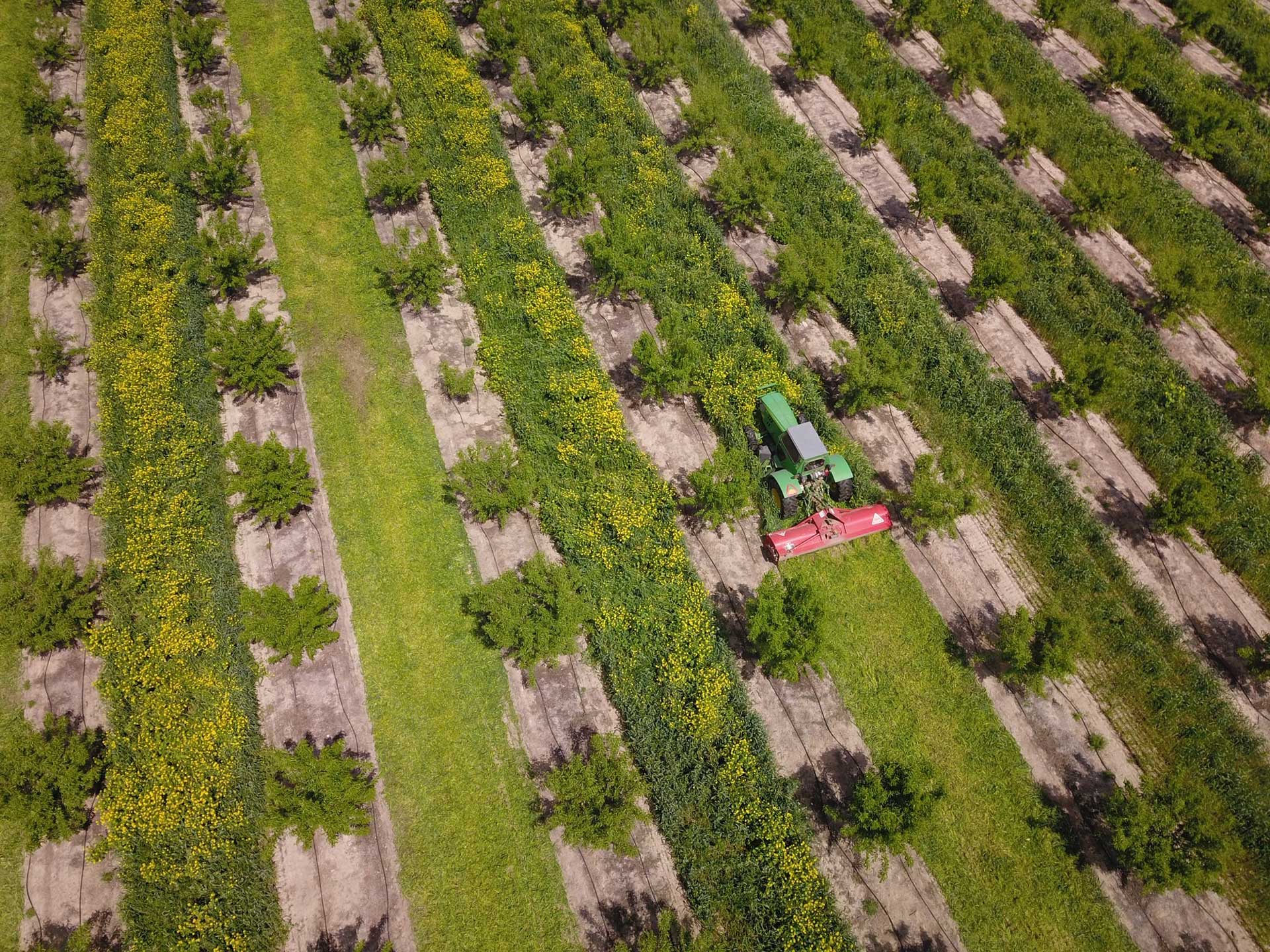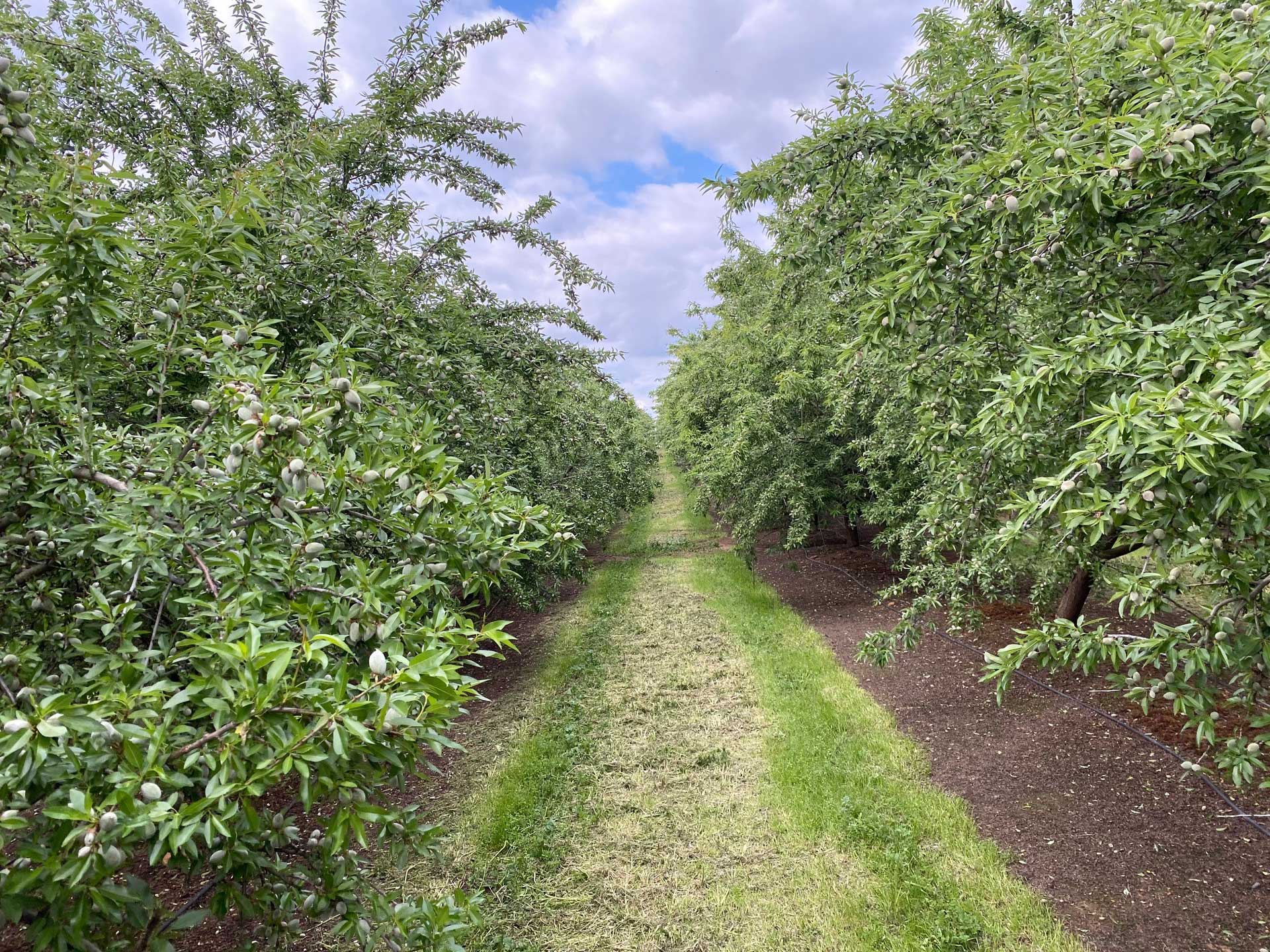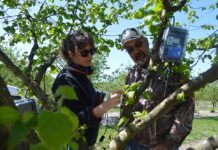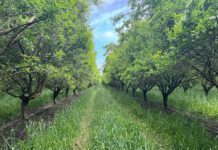
Researchers and growers at Davis Ranches recently wrapped up a three-year grant-funded trial in conjunction with UC Davis examining the positives and negatives of 31 available cover crops species. While the cover crops were grown in field rows instead of orchards, many of the principles and knowledge gained from the project are universal and applicable to orchard settings.
The study provided valuable perspectives for the purpose of cover crops and their management, such as the fact that cover crops are not cash crops like the specialty crops they grow next to. They can help save money, but they don’t make money. There are also the costs associated with planting and removing a cover crop. In some instances, it is not a cheap practice, but research has proven that with time, best management practices and available incentives, the ecological and economic benefits can outweigh associated costs.
Looking from Both Sides
Kurt Richter, a grower affiliated with the project and owner of Richter Ag, explained some concerns he has with the practice now that the project has ended, noting that at the end of the day, he still believes cover cropping is a valuable practice. “Number one is just the cost of all this,” he said during a field day in February. “There’s no cash return on a cover crop. We’re farmers, we’re businessmen, and this needs to be able to pay for itself ultimately in some way.”
Previous research has provided evidence of potential economic benefits from cover cropping. A study (doi.org/10.1016/j.jenvman.2020.110205) published in 2020 by UC Davis’ Alyssa DeVincentis along with UC and Swedish researchers analyzed the costs/benefits of winter cover cropping in almond and processing tomatoes based on grower surveys. In almond, the benefit/cost ratio exceeded a value of 1 after about ten years, excluding harvest complications. When harvest complications were included in the survey calculation, the benefit/cost ratio exceeded a value of 1 after about 15 years. Important to note is that all operations are different and have different goals, and growers can calculate and analyze costs and benefits of their cover crops using UC’s Winter Cover Crop Calculator (shiny.lawr.ucdavis.edu/shiny/cc_calculator/app.Rmd#section-overview).
Richter named seed and labor as the highest costs when incorporating cover crops. While incentive programs, such as those through USDA’s Natural Resources Conservation Service, exist for mitigating cover crop seed costs, if there isn’t sufficient rain when the seed goes into the ground or it’s too cold, then it’s all for nothing. For these reasons, timing of seeding is important.
Almond Board’s Cover Crop BMPs outline the most important factors to consider for timing. The guide recommends growers seed cover crops after harvest and post-harvest levelling of the orchard middles, noting that the most benefits will be seen if seeding is completed prior to tree irrigation (for microsprinkler and flood irrigation) or prior to rain (for drip-irrigated systems.)
Some growers have voiced concerns in the past with cover crops competing for water with almond trees, but “research indicates that the soil moisture of orchard alleys with cover crops is largely unchanged from keeping a bare orchard alley over the winter, indicating limited excess water use when used as a winter cover crop,” according to UC Davis Postdoctoral Researcher Vivian Wauters.
Soil temperatures also need to be considered. Seeding in colder temperatures during December and January is most limiting for cover crops, thus it is recommended that seeding occur prior to December or even during spring if water availability is adequate.
Richter listed one of the most important reasons he and the research group have seen for planting cover cropping as weed suppression. “Weed control is increasingly difficult,” Richter said. “Herbicides feel less effective every year and the weeds adapt and adjust. Switching to something like this is a good way to offset that.”
“Cover crops, through direct competition with weedy species, can shift or reduce weed populations during winter growth,” Wauters said.
The Cover Crop BMPs note that in almond orchards, cover crop species with high seeding rates, such as grasses and some native annuals, are needed to out-compete weeds throughout the season. If prompt establishment is not achieved, weeds will not be suppressed. Be careful about incorporating native species as some may be herbicide-resistant.
Cover crops are not an immediate solution to most issues they’re used to assist with, and for this reason, the practice might not fit every grower’s needs. Return on investment can take time.
“For a specific beneficial result (reducing compaction and increasing water infiltration), growers may see more short-term benefits,” Wauters said. “However, ongoing research in our lab indicates that winter cover cropping alone (without adoption of other agroecological practices, such as animal integration, or year-round cover) may be insufficient to shift soil biological and chemical indicators.”

Additional In-Season Considerations
A cover crop requires precise management during certain parts of its life cycle in an almond-growing season. At planting, as was previously mentioned, timing of seeding is important for it to germinate. Cover crop eventually need to be terminated, and the timing of this termination is key to encouraging decomposition of different species, creating a clean floor for harvest and reducing water competition with trees during the most crucial part of the growing season.
Termination of cover crops in almond orchards can take place as early as February and as late as May or even June depending on species. Almond Board’s Cover Crop BMPs note that timing of termination depends on specific goals, and different timings pose different benefits/tradeoffs.
Early termination in February to mid-March can help residue break down early before other operations, but biomass accumulation is limited. Mid-termination in mid-March to April can allow for more biomass accumulation, but fast-growing brassicas might be woody and difficult to manage. Late termination in May to June gives ample time for flowering to provide pollinator forage, but letting the cover crop grow well beyond flowering reduces any potential nitrogen benefits. Additional information regarding cover crop contributions to nitrogen can be found in Almond Board’s Nitrogen BMPs.
The Cover Crop BMPs recommend mowing to terminate cover crops, potentially more than once depending on species and level of growth for proper decomposition. If terminating a cover crop early when rain is still a possibility, follow weather forecasts and terminate before a rain to allow maximum water absorption for almond trees or other cash crops.
“You want to have that rain go entirely into your field,” said UCCE Water Resources Specialist Sam Sandoval, who was also present at the Colusa field day. “That will improve soil moisture and organic matter.”
These benefits can be amplified by pairing cover crops with other sustainability practices, according to Wauter. “Like any tool, it works best when integrated with other sustainability practices, such as organic amendment applications and animal integration, and if the cover crops are used for their flower resources, then protecting insects from risk of pesticide exposure.”

Taylor Chalstrom
Taylor is the new Digital Content Editor at JCS Marketing Inc., coming on to the team in June 2020 as an editorial intern. He previously attended Cal Poly, San Luis Obispo, earning a degree in Agricultural Science and a minor in Agricultural Communication. Taylor wrote for AgCircle, Cal Poly’s award-winning agriculture magazine produced by the Brock Center for Agricultural Communication, for two and a half years before becoming Brock’s Associate Editor for writing in his final year at Cal Poly.















